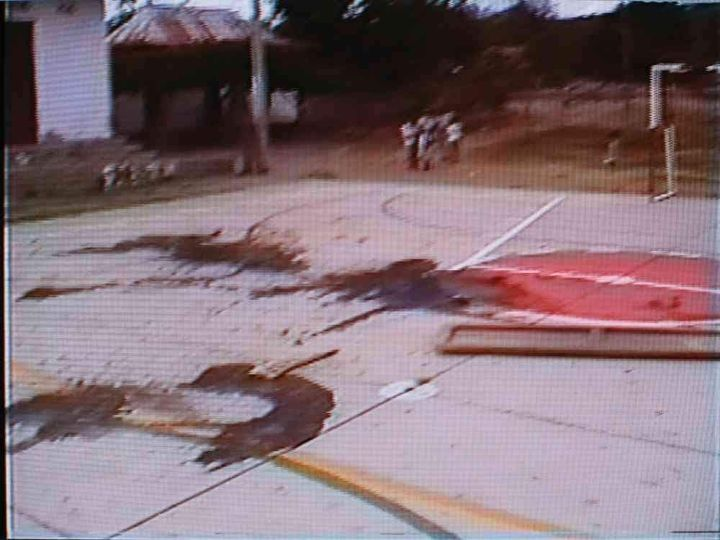This is not a happy story to tell.

This is one of the few images that can be found of the event more than 20 years ago.
Imagine that you decide that being poor is not for you, and you decide to go with some family and friends to found a village. The location is not the best, but the land produces. There is no luxury but there is space to build big houses. And everyone is hard working and hard working. Imagine that over time the families grow. There are now almost five hundred members of a community where everyone knows each other. The school was built by the parents, the church was built by all of them. The tobacco economy has given them more than enough to live on. There is optimism.
When someone gets sick, everyone helps. When someone needs financial help, the other families don't let them down. The town is growing. In its time of progress it reaches 7000 inhabitants between urban and rural population. Some already dream of turning it into a municipality. The name of the town, named after its salty waters, seems more a sarcasm than a reality. It is prosperous, people are optimistic, every day there is more and more of the hope that Colombia needs so much and it is reflected in the faces of its inhabitants... But tragedy came in jackets and rubber boots.
The rumors began fifteen or twenty days before. In the newscasts of the time, the alerts from the ombudsman's office, the calls from the church and even the journalists themselves warned that something could happen. And finally it happened. 450 paramilitaries, supported by two helicopter gunships, in an enveloping operation that prevented any possibility of escape, went on a rampage against the civilian population of the rural areas and the population of the urban center from February 16 to 21, 2000.
They put the people in the micro court. They raffled executions. They played the town's bagpipes and drums, and to their rhythm they started a party of horror and death. They used tortured deserters to mention people they only knew by hearsay. The first boy, they put a hood over his head and told him to confess while they cut off his ears and beat him. Others were hanged against trees. One girl was mass raped. Another was impaled.
Between sixty and 100 people were tortured and killed in an orgy of blood. Imagine, for a second seeing your friends and neighbors subjected to this torture, wondering if you are next. They lasted two days in the village, and another three hunting neighbors on the trails.
Imagine your helplessness if two hours after the paramilitaries leave, fed up with innocent blood, you see the Marines arrive with a training exercise trot (In my opinion, accomplices of this tragedy and many more, the armed forces are the prostitute of the nation).
Imagine the metallic smell of dried blood mixed with dust, the sweet and nauseating smell of the dead because they were not even allowed to bury the dead, the silence of the wind in the trees, only broken by the dry crying of the widows and the sobbing of the children. Imagine it well. And remember it. Because 20 years ago, in the village of El Salado, municipality of Carmen de Bolivar, one of the worst massacres in the long list of infamies in our history took place.
I remenber this history, this is the dark side of Colombia